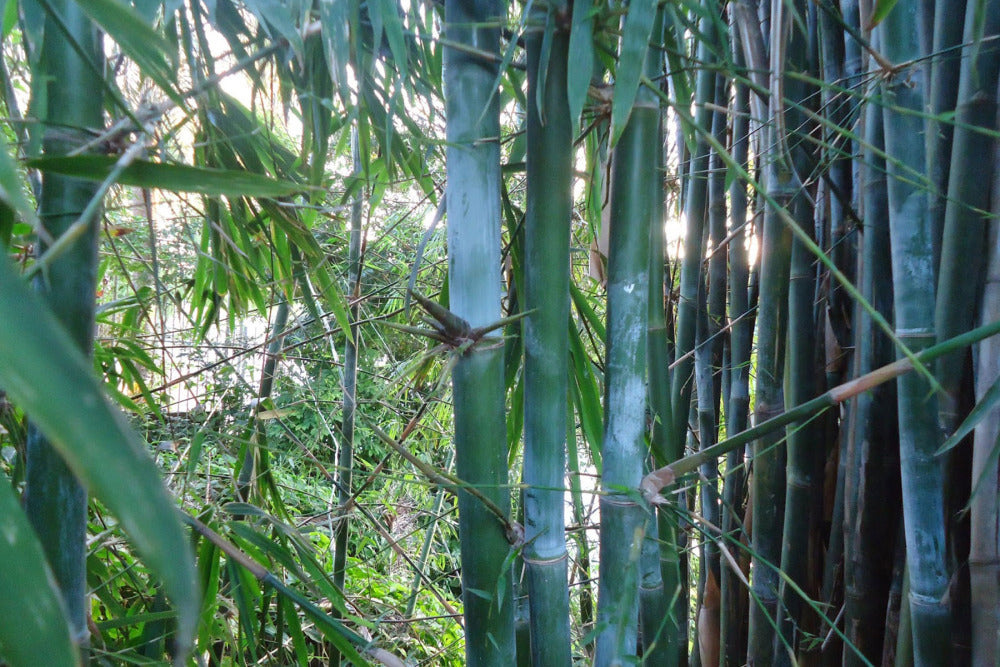Vegetable textile fibers
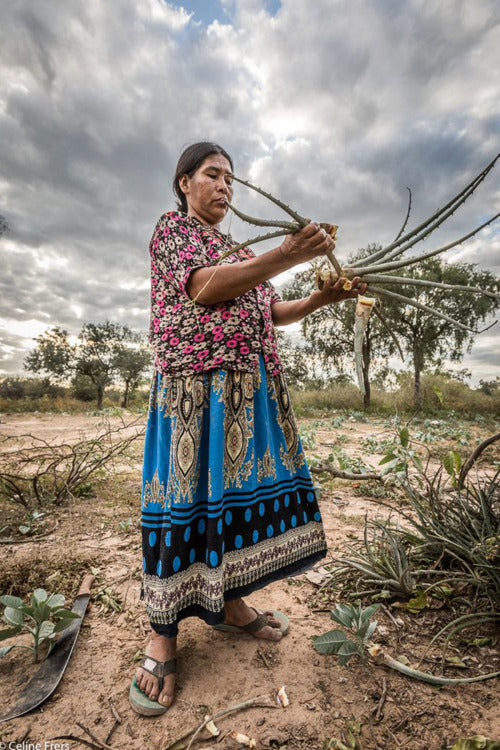
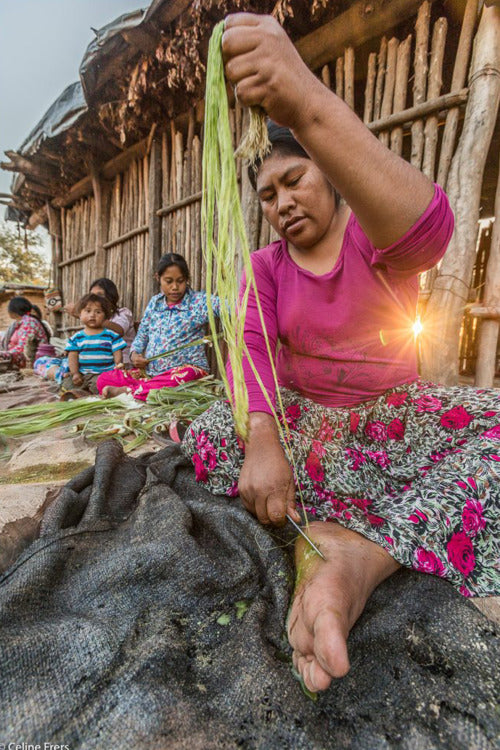
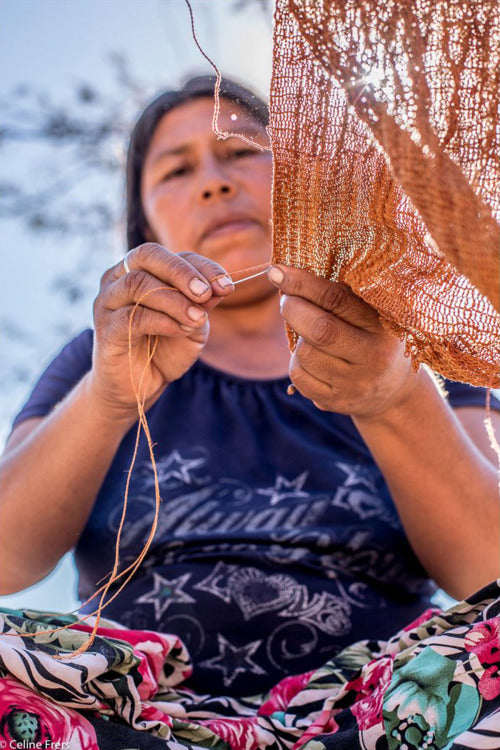
Chaguar
The chaguar (Bromelia hieronymi) has been traditionally used by the Wichi, a hunter-gatherer people from the Gran Chaco, and is, along with their language, at the heart of their cultural identity. Using ancient techniques in yica, the Wichi women capture the ancestral codes of artistic expression in different designs that they weave by combining shapes and tones. Yica comes from the chaguar, a plant from the bromeliad family that grows spontaneously in the territory. The search and collection of chaguar for textile purposes, as well as the process of extracting the fiber, spinning, dyeing and subsequent weaving are activities carried out exclusively by women. From each chaguaral, the women select the plants that are of the appropriate size and quality. Once the leaves have been collected to obtain the threads, they must undergo a laborious process that takes several weeks of work.
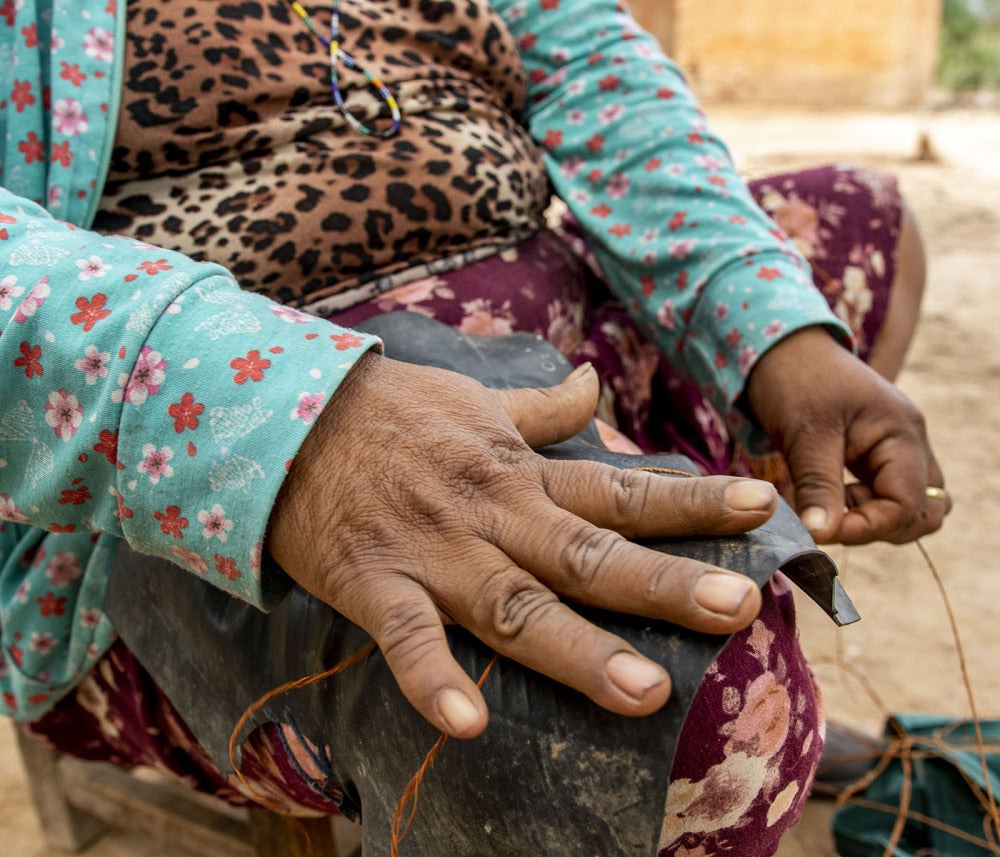
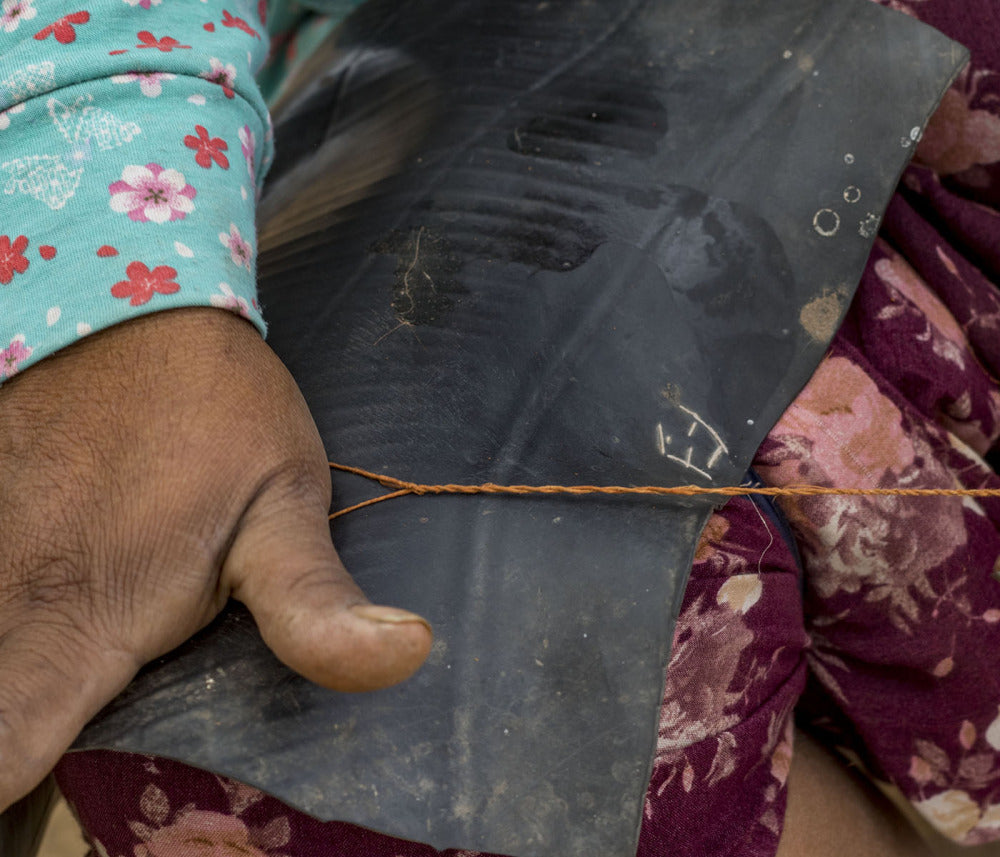
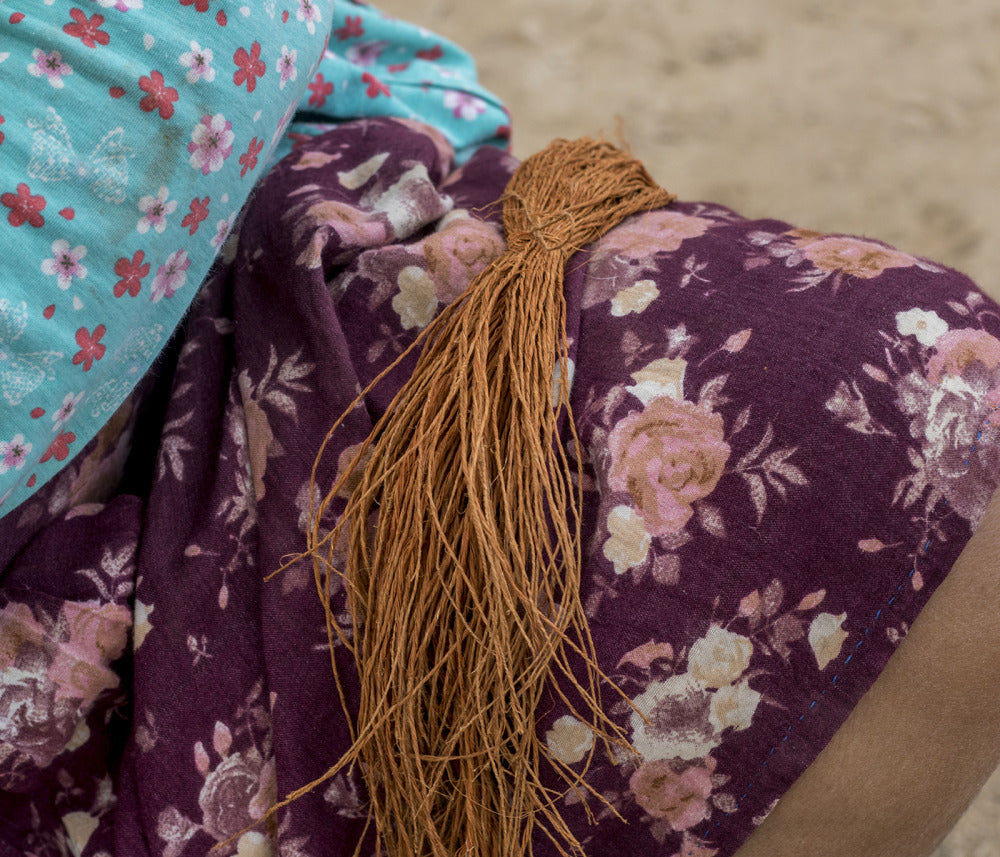
The spines are removed and the fibres are peeled off, separating them from the outer part. They are then crushed in a stone mortar, scraped, soaked again and again, extracting the chlorophyll until the fibre takes on a raw colour, and then placed in the sun for several days to dehydrate them. The fibre obtained is then dyed with dyes extracted from the same forest and spun into balls. With these same threads, the Wichi women continue to make articles for subsistence such as carrying bags, ropes for animals, ropes for climbing trees, fishing nets, hammocks, blankets and mats. The indigenous peoples of the Boreal and Central Chaco are considered to have the richest tradition of knitting, after the Andean peoples. These mesh nets are the survival of one of the oldest textile techniques in South America.
Palma Caranday
The Caranday Palm is one of the five species that comprise the genus Trithinax, native to South America. Very rustic, it grows in areas with arid, stony and dry soils, and can be found in isolation or forming extensive palm groves. It is a type of fiber that has the particularity that when wet it is very malleable and easy to manipulate, and when dry it acquires a very high resistance.
The process begins in the native forest, with the manual collection of palm leaves. For their conservation and durability, the search is done only on sunny days and during the new moon, since this ensures a more flexible and clear fiber. Once the best leaves are selected, they are cut by twisting them to avoid damaging the plant. Then the defibering and drying process takes place, which lasts 10 to 15 days. Different techniques are used to make the baskets: spiral, where the base is made of bundles of palm sewn with a needle, or woven, interlaced with the fingers, and with wooden molds on which the fibers are interwoven.
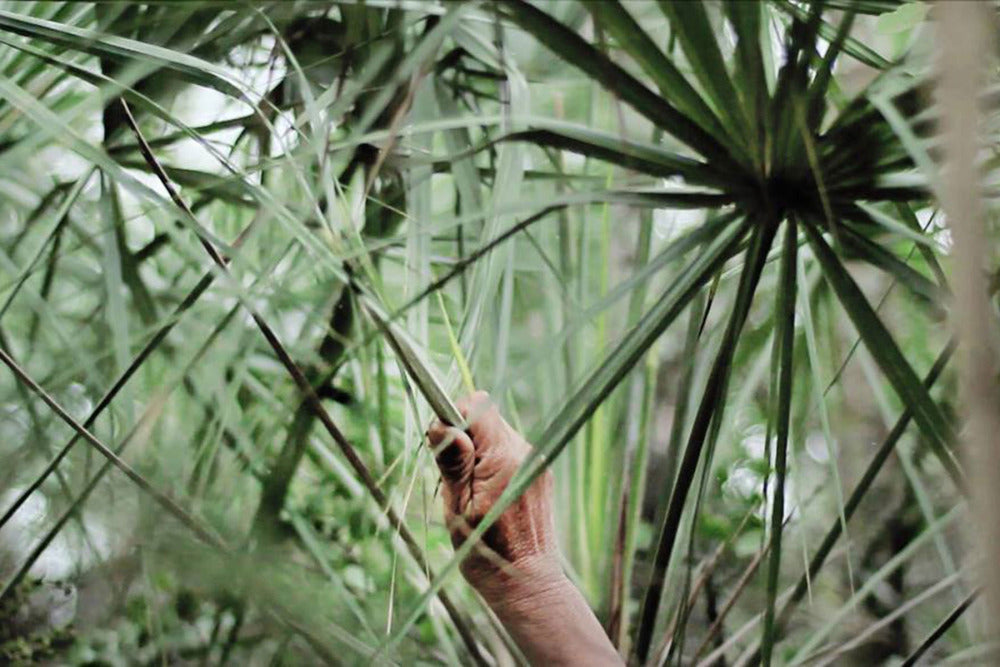
Takuaras
The material used in Mbya Guarani basketry is a variety of takuara available in the province of Misiones, which can be woven and has the particularity of growing for long periods of time and flowering only once in its life, after which it dies, producing seeds for the next generation. These flowerings occur en masse every 30 years in the same territory.
Once the takuaras have been obtained from the forest, they are cut, scraped to remove the photosynthetic film that allows them to be coloured, they are left to dry in the sun, and longitudinal ribbons of different sizes are cut which are then dried on bundles of rods until they are ready to be woven. These ribbons, known as takuapí, are then unfolded in infinite weaves generating rhythm, balance, contrast and texture. The designs arise from the interweaving with güembepí , another vegetal ribbon of a reddish earthy colour, very resistant, extracted from the multiple aerial roots of Philodendron bipinnatifidum, known by the Guaraní as güembé.
The techniques and materials used are not merely practical strategies, as they respond to, or are linked to, spiritual states,
Their baskets are much more than a container for transport. They were and continue to be part of a ritual of invocation and presence of the sacred, of the ancestors. Their fibers continue to be collected from the few trees of the ancestors that have not yet been alienated, from living beings that still retain the traces, the presences and the songs.
